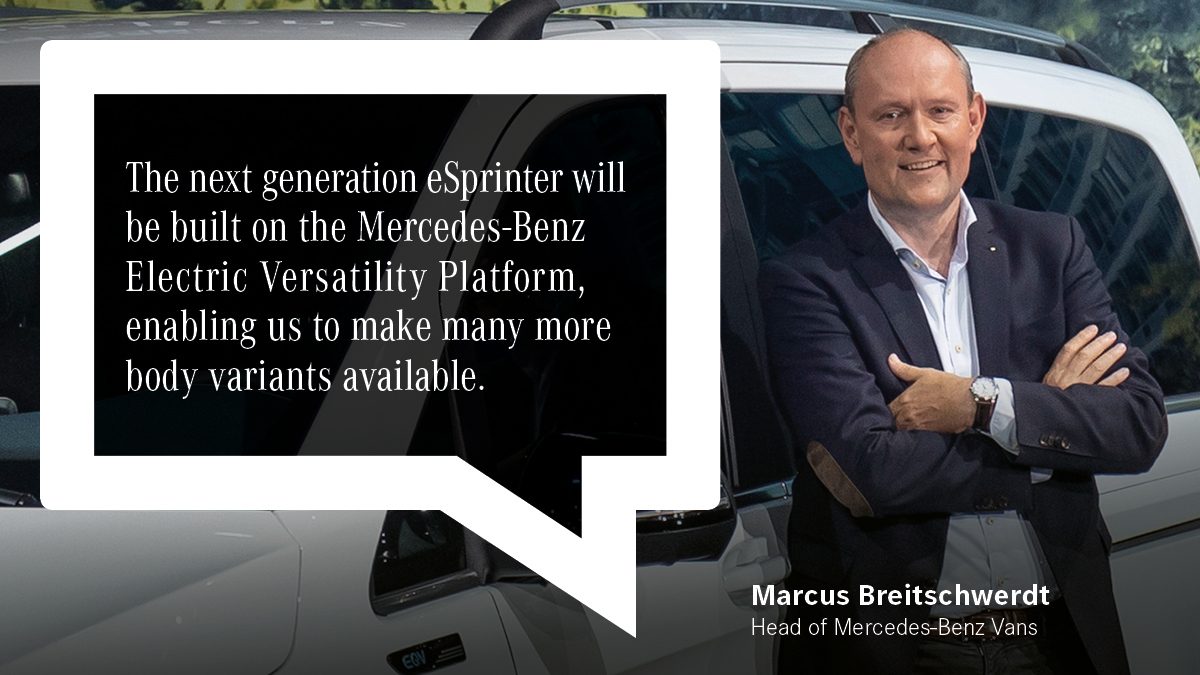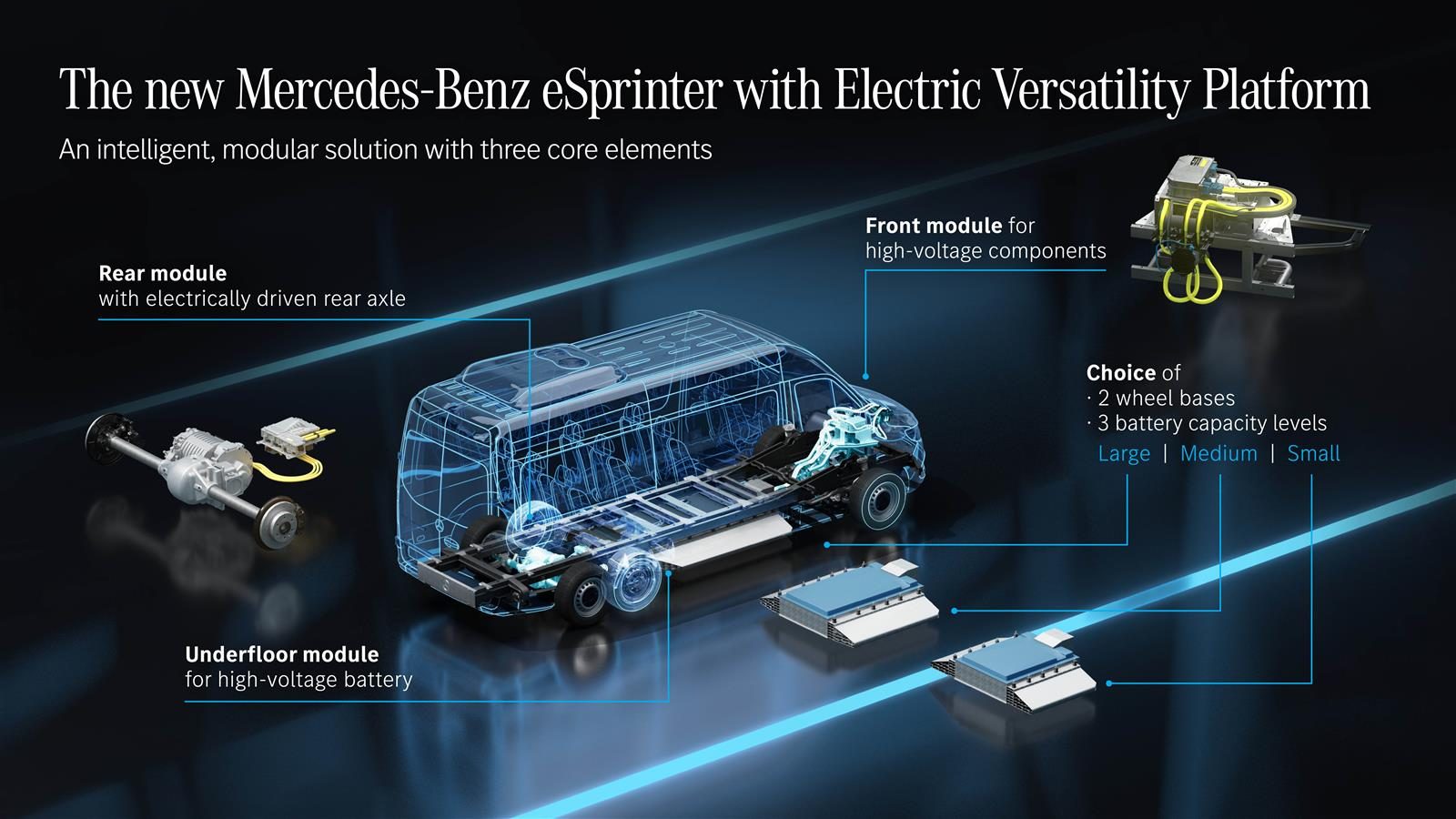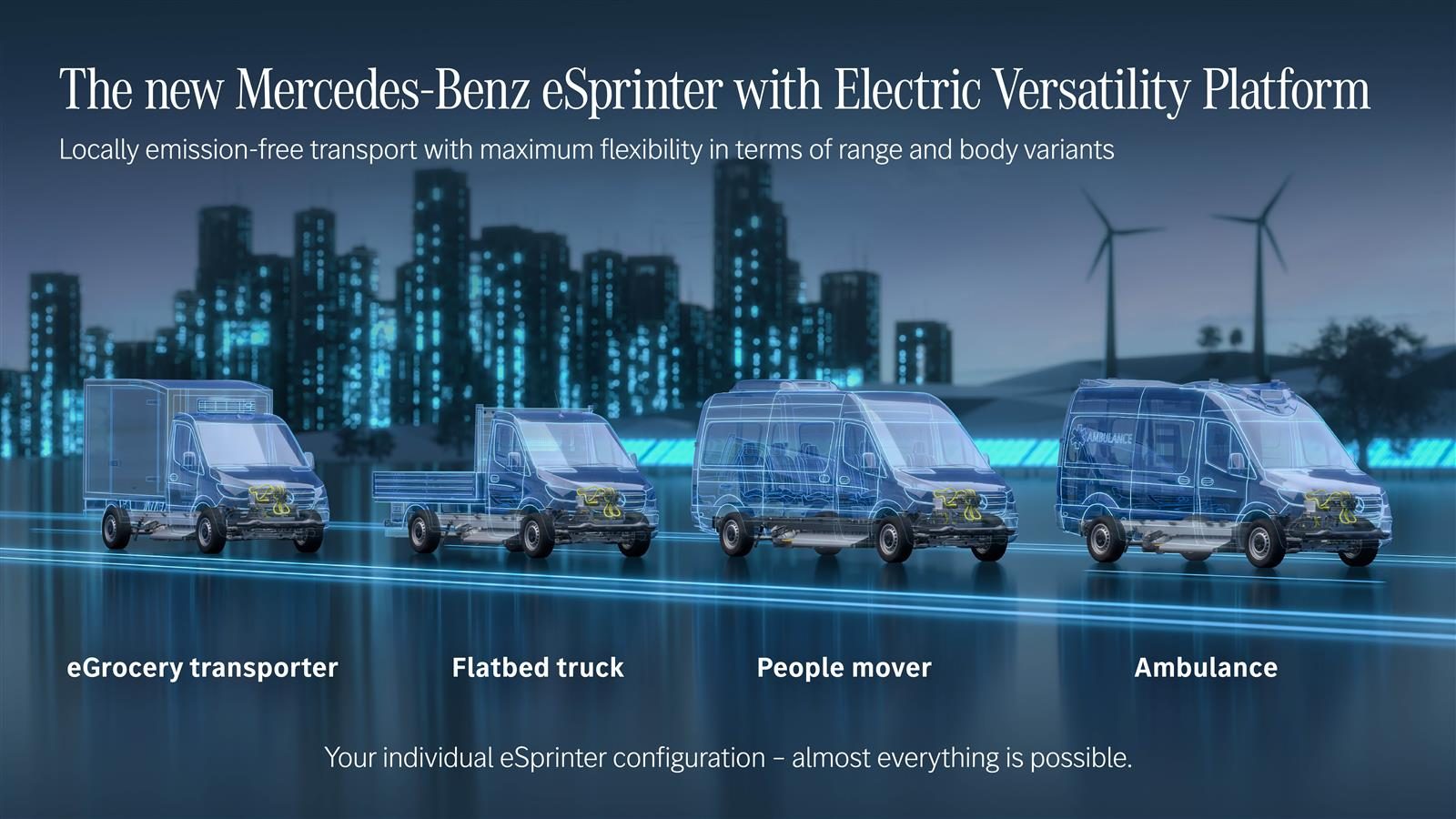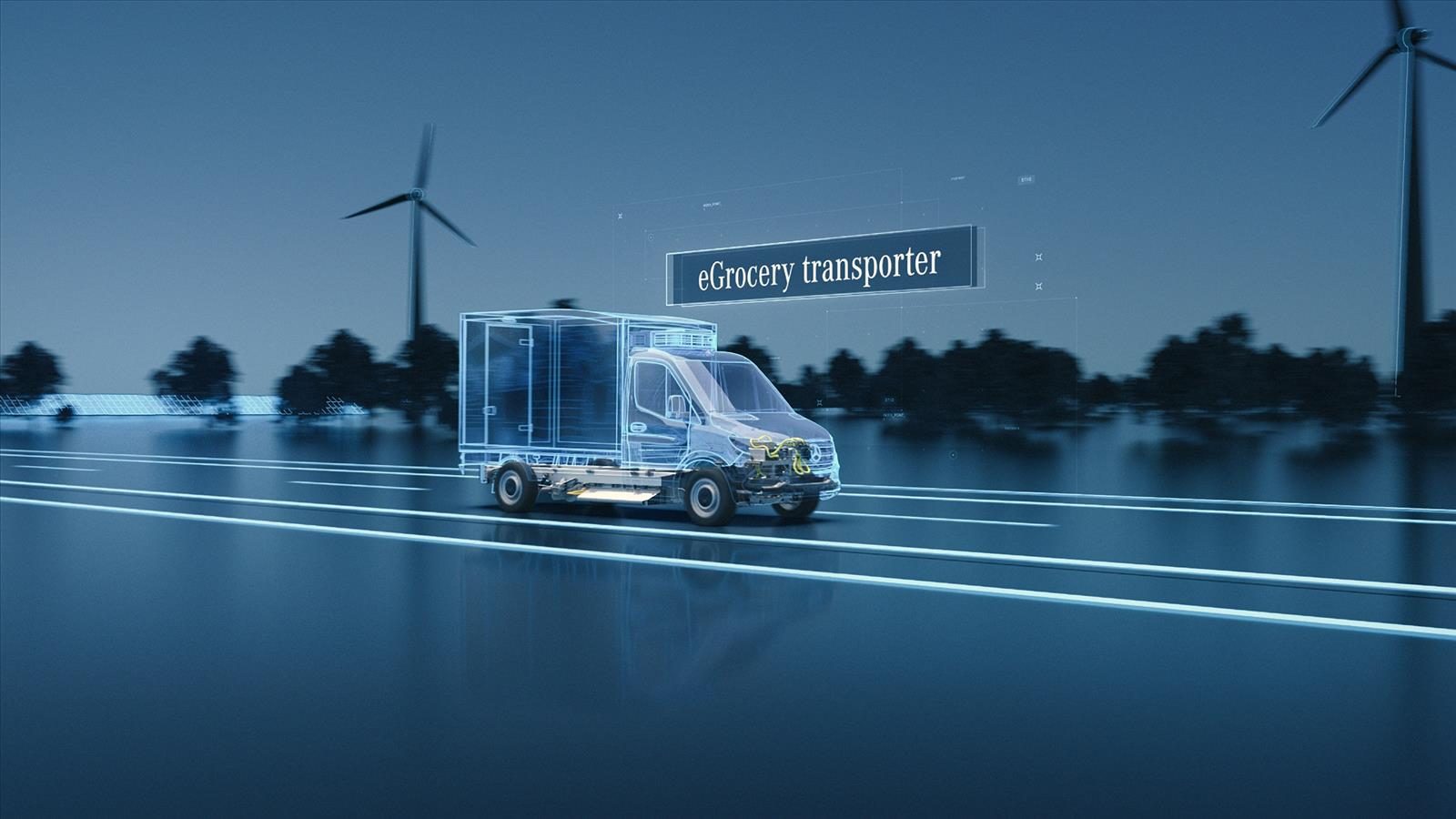Mercedes-Benz Vans announces next-generation eSprinter based on newly developed ‘Electric Versatility Platform‘

Mercedes-Benz Vans is accelerating down its road to full electrification and will make all of its model ranges available with a battery-electric drivetrain with a focus on reliability, quality and optimised total cost of ownership. To create even greater added value for customers in the future, Mercedes-Benz Vans developed the new Electric Versatility Platform for the large van segment. This innovative e-drive platform will be the technical basis for the next-generation eSprinter. The core elements of the new platform are three modules that enable the greatest possible flexibility in the development and design of different body types. This allows for new eSprinter body configurations previously only available with combustion engines.

“The next generation eSprinter will enable us to make many more body variants available. This will ensure we meet the requirements of our customers across multiple sectors in the future, while offering the advantages of locally emission-free electric drive,” said Marcus Breitschwerdt, head of Mercedes-Benz Vans. “The Sprinter has been demonstrating our competence in the transport field for a quarter of a century. In the field of electromobility, we have initiated many innovations in recent years. With the implementation of our accelerated electrification strategy, we‘re combining the best of both worlds – our innovation and expertise!”

Mercedes-Benz is convinced of the ecological and economic advantages of battery-electric vans and will continue to push forward its plans to bring electrically powered vans to the market in all segments. The Mercedes-Benz Vans division is accelerating its electrification strategy and pursuing leadership in electric drive by fast-tracking development of its new Electric Versatility Platform for the large van segment. This innovative e-drive platform will underpin the next generation of eSprinter, a product that will aim for best-in-class performance. With an investment of 350 million euros, the Electric Versatility Platform will play a key role in Mercedes-Benz Vans‘ plans for emission-free transportation, and will offer optimal solutions, including for the US and Canada. As the next generation eSprinter will be produced CO2 neutral, this will be yet another step toward realising Daimler‘s ‘Ambition 2039‘.

Today, Mercedes-Benz Vans is already the EV market leader with a share of more than 30% of the midsize and large van segments in Europe. Following the eVito and eSprinter, Mercedes-Benz Vans will ultimately cover the battery-electric range in all commercial transporter segments with the future eCitan.
The development of the Electric Versatility Platform significantly underlines the refocused Mercedes-Benz Vans‘ strategy, which, among other things, enshrines leadership in the field of electromobility.
Mercedes-Benz Vans has refocused its strategy in line with the passenger car division, focusing on the following subject areas:
-
Clear positioning as a premium brand for commercial and private customers
Mercedes-Benz Vans is sharpening its profile as a premium provider of future-oriented transport solutions for commercial and private customers.
-
Leveraging growth potential
Central to the new strategy is a disciplined focus on sales and high-margin markets and segments to advance profitable growth worldwide. In parallel with the expansion of its activities in Europe, the company will continue to grow its presence in China and North America.
-
Intensifying customer loyalty and growing recurrent revenues
Mercedes-Benz Vans will further intensify its cooperation with customers to ensure products and services are perfectly tailored to their needs.
-
Leading position in electric drives and digital solutions
Mercedes-Benz Vans‘ objective is to set new standards in the van segment with customer- and future-oriented solutions. In addition to electromobility, the networking of vehicles and digital solutions are also consistently being further developed.
-
Reduced costs
In order to improve profitability and increase competitiveness, fixed costs will be reduced. Profitability also plays a key role against the backdrop of the transformation to emission-free and connected mobility.





